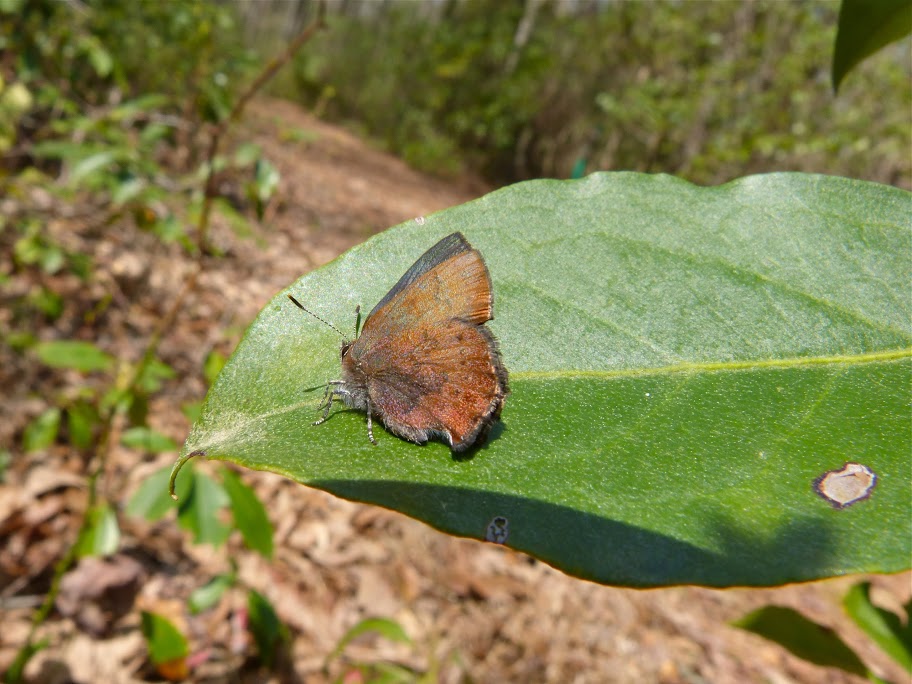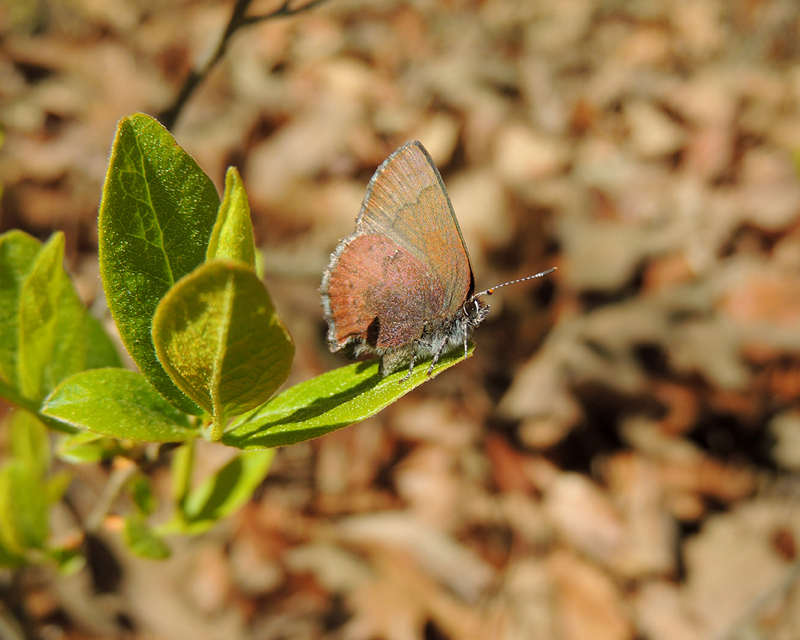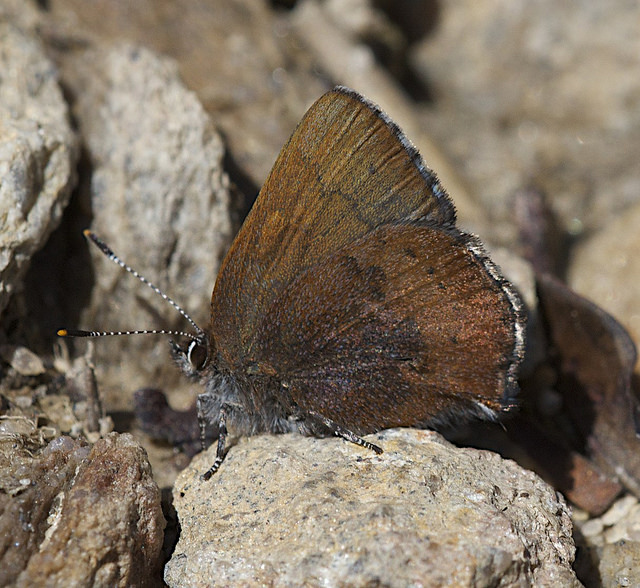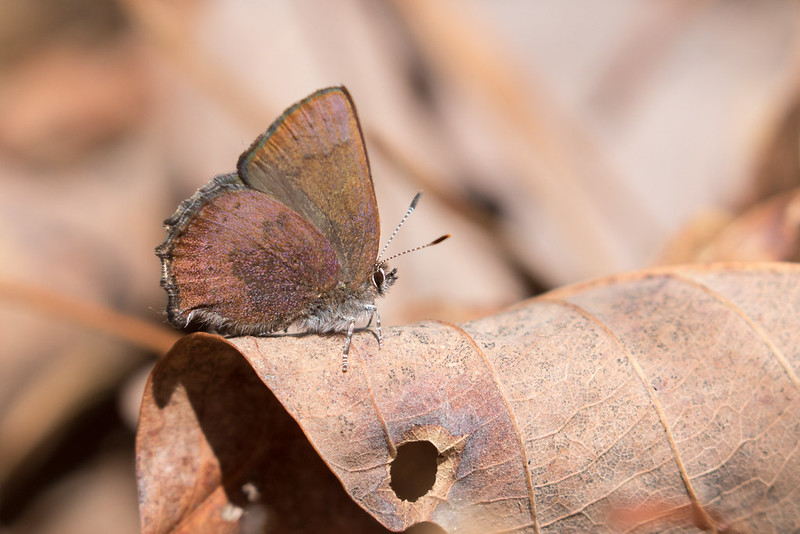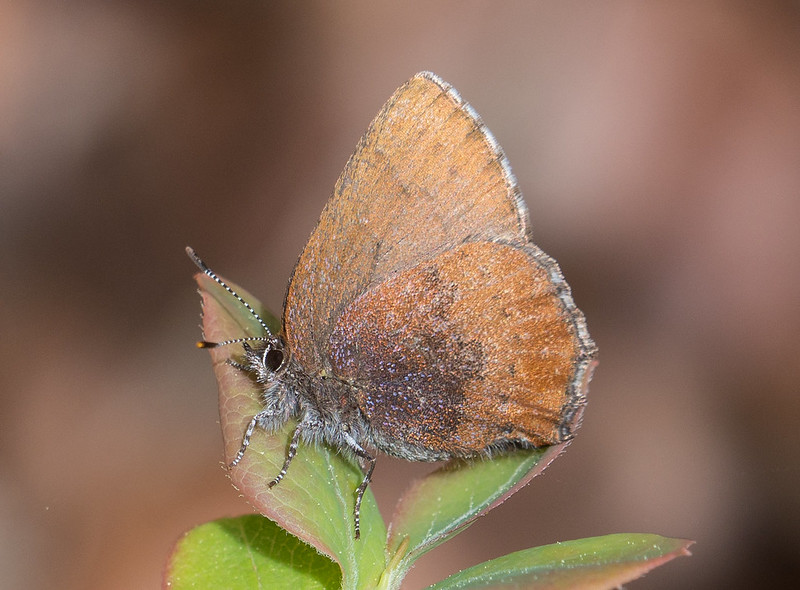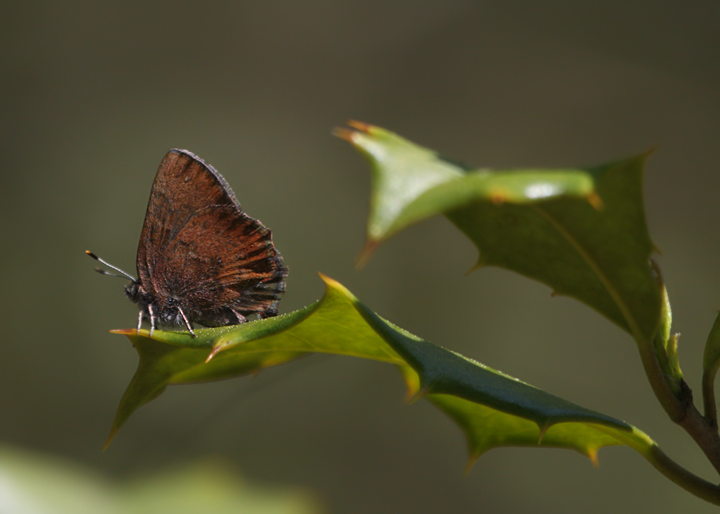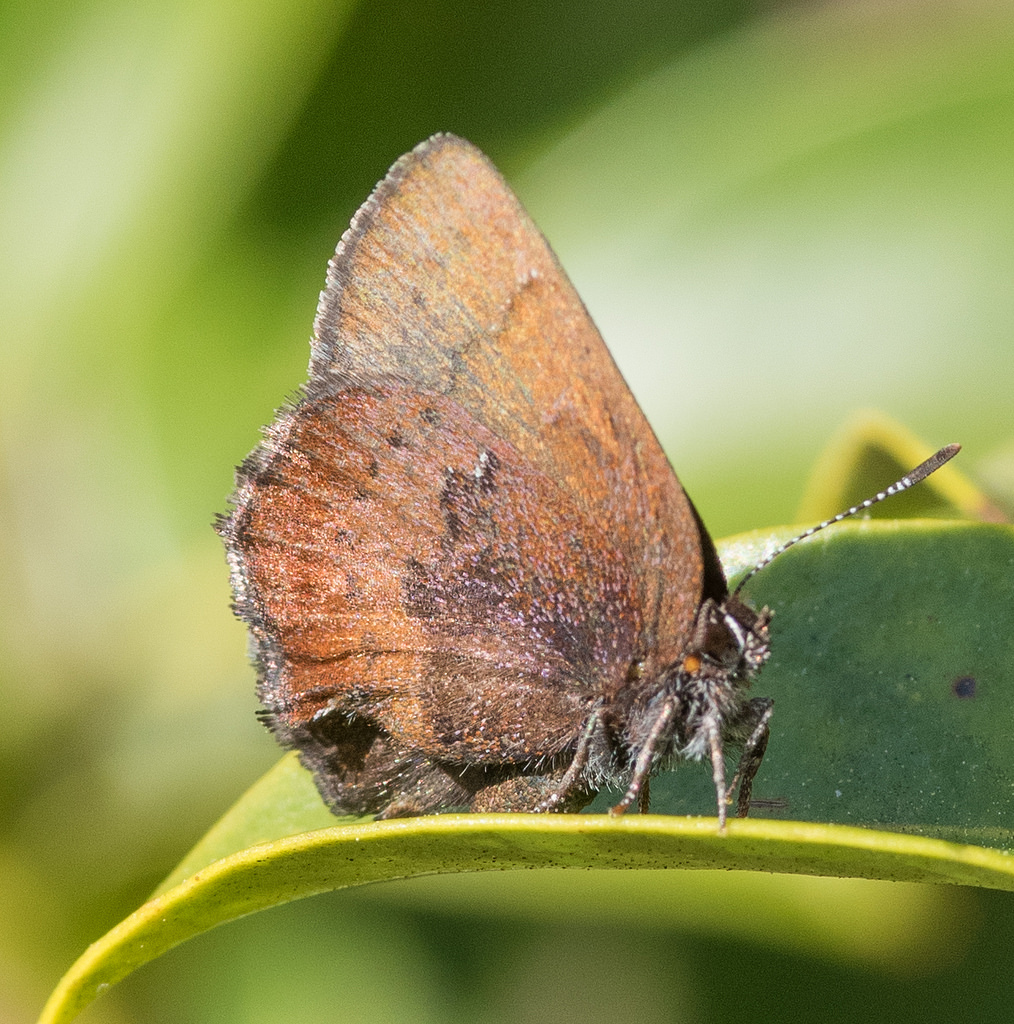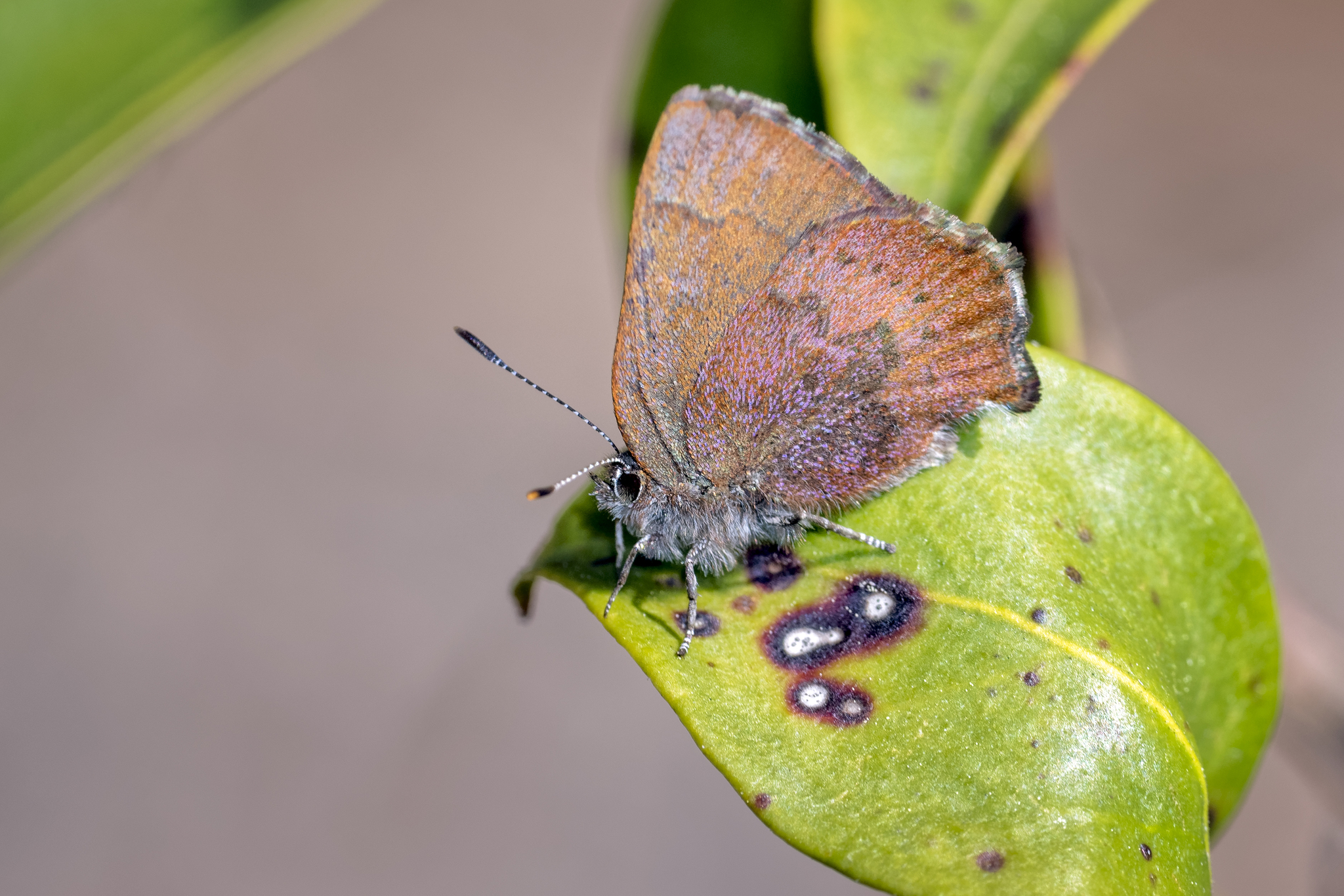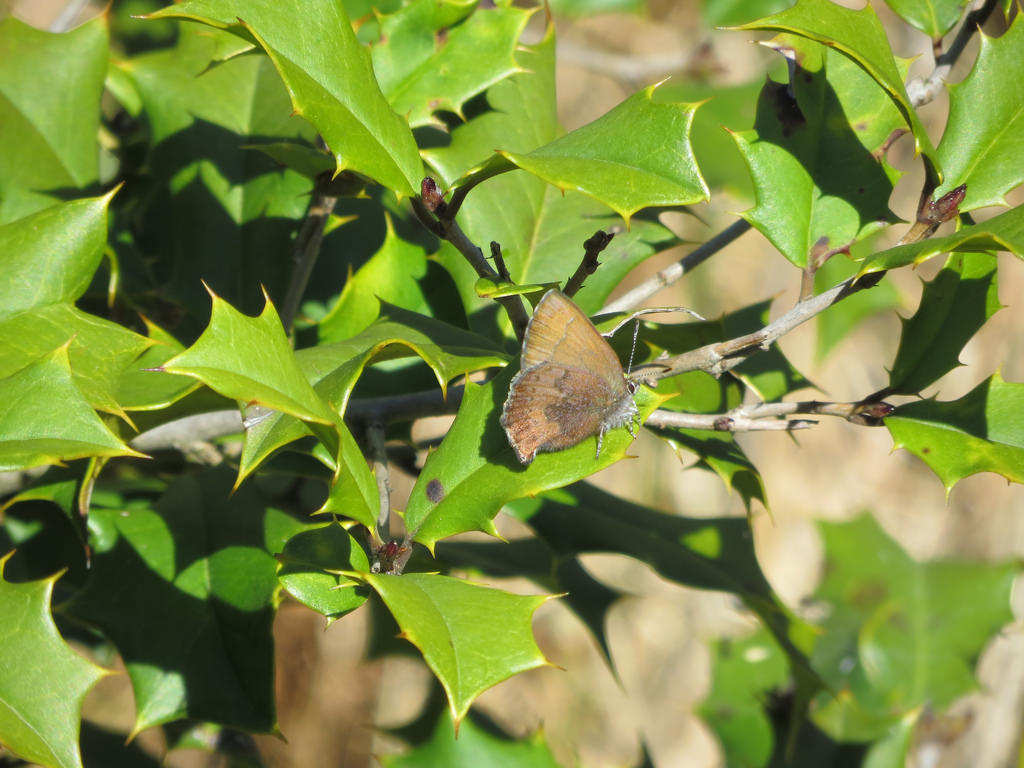Map Snapshot






















90 Records
Status
Brown Elfin (Callophrys augustinus) is a nickel-sized brownish butterfly, probably the most widespread member of its genus in Maryland. This butterfly flies early, generally April, probably lingering into May in more northerly areas. It utilizes various ericaceous species as host plants, and is therefore typically found in openings in forest with abundant blueberries or laurel, like bogs, barrens or balds (Butterflies of Maryland: A Biological Summary and Checklist by Lynn Davidson & Richard Smith; Brock & Kaufman 2003; BAMONA site; Allen 1997).
Relationships
Utilizes members of the Heath Family (Ericaceae), such as blueberries (Vaccinium sp.) and possibly others.
Seasonality Snapshot
Source: Wikipedia
| Callophrys augustinus | |
|---|---|

| |
| Scientific classification | |
| Domain: | Eukaryota |
| Kingdom: | Animalia |
| Phylum: | Arthropoda |
| Class: | Insecta |
| Order: | Lepidoptera |
| Family: | Lycaenidae |
| Genus: | Callophrys |
| Species: | C. augustinus
|
| Binomial name | |
| Callophrys augustinus | |
| Synonyms | |
| |
Callophrys augustinus, the brown elfin, is a species of butterfly of the family Lycaenidae, found from Alaska to northern Mexico. One of its subspecies, C. augustinus iroides, is known as the western elfin.
Taxonomy
[edit]This species was first collected by John Richardson in 1827. The specific epithet, augustinus, was chosen in honor of Inuit interpreter Tatannuaq, who was also known as 'Augustus'.[3]
Subspecies
[edit]- Callophrys augustinus augustinus
- Callophrys augustinus helenae (dos Passos, 1943) – Newfoundland
- Callophrys augustinus croesioides (Scudder, 1876)
- Callophrys augustinus iroides (Boisduval, 1852) – British Columbia to California
- Callophrys augustinus annettae (dos Passos, 1943) – New Mexico
- Callophrys augustinus concava Austin, 1998 – Nevada
Distribution
[edit]It is found from Newfoundland north and west through the northern United States and the prairie provinces to Alaska. To the south it ranges in Appalachian Mountains to northern Georgia and northern Alabama, further south through the western mountains to northern Baja California in Mexico.[4]
Ecology
[edit]The larvae feed on Ericaceae species, including Vaccinium vacillans and Ledum groenlandicum in the east. They feed on a wide variety of plants in the west, including Arbutus and Cuscuta species. They feed on the flowers and fruits of their host plant.
Pupation takes place in the litter at the base of the host plant. Hibernation takes place in the pupal stage.
The adult's wingspan is 22–29 mm. Adults are on wing from early May to early June in one generation.[5] They feed on flower nectar from various species, including Vaccinium, Sanicula arctopoides, Lindera, Salix, Barbarea and Prunus americana.
References
[edit]- ^ "NatureServe Explorer 2.0 Callophrys augustinus Brown Elfin". explorer.natureserve.org. Archived from the original on 31 March 2021. Retrieved 20 September 2020.
- ^ Incisalia at Markku Savela's Lepidoptera and Some Other Life Forms
- ^ Hood, Robert (1974). Houston, C. Stuart (ed.). To the Arctic by Canoe, 1819–1821 : The Journal and Paintings of Robert Hood, Midshipman with Franklin. Montreal: Arctic Institute of North America. pp. 199–200. ISBN 9780773501928. Retrieved 16 January 2024.
- ^ "Butterflies and Moths of North America". Archived from the original on 6 September 2012. Retrieved 29 June 2011.
- ^ Schmidt, B. C. "Species Details Callophrys augustinus". University of Alberta Museums. E.H. Strickland Entomological Museum. Archived from the original on 17 November 2020. Retrieved 8 November 2020.
